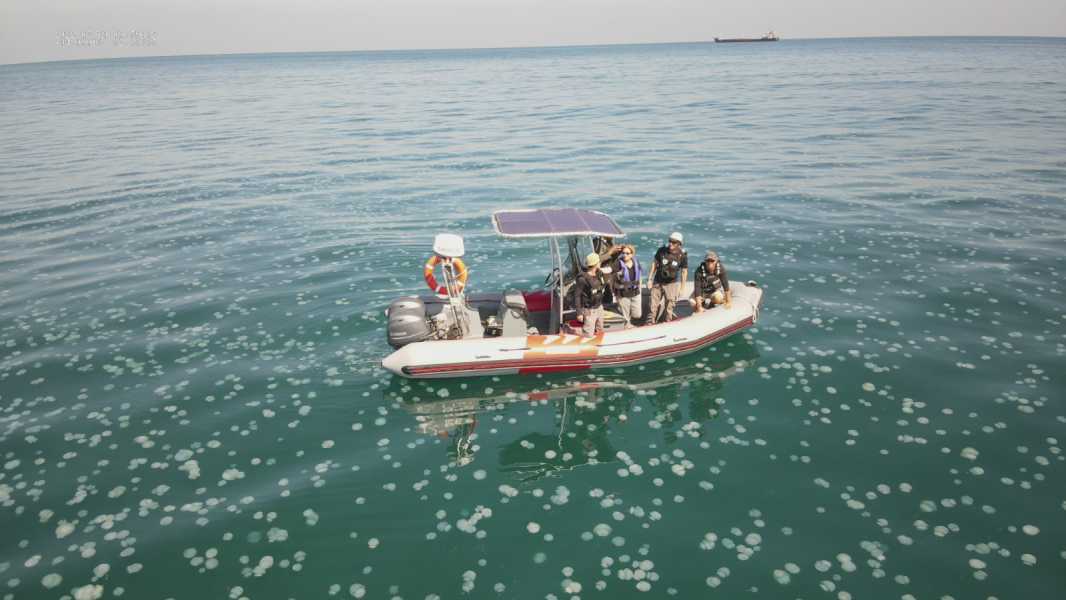
Similar swarms were previously observed in the waters off Haifa in 2015 and 2017. (Photo credit: Rotem Sadach/Israel Nature and Parks Authority)
Jellyfish are forming large swarms in the Mediterranean Sea, near the northern Israeli port city of Haifa. The sea was “dazzled by thousands of white dots,” and the swarm stretched hundreds of meters below the surface, The Jerusalem Post reported.
On July 20, the Israel Nature and Parks Authority (NPA) used drones to capture footage of swarming nomad jellyfish (Rhopilema nomadica) in Haifa Bay and posted the footage on the agency's website. The NPA also warned people not to swim in the area due to the risk of painful jellyfish stings.
NPA officials said in a statement (translated from Hebrew) that the abnormally high concentration of jellyfish, known as a bloom, is likely the result of human activity, which could include pollution and climate change.
According to Ruti Yahel, a marine ecologist at the NPA, the sharp increase in jellyfish numbers this summer could have serious consequences for the marine ecosystem near Haifa and even negatively impact industry and tourism.
“We’re seeing significant damage in many areas, such as ecological competition with fish for food, economic damage, clogging of desalination plant pumps, cooling of power plants, and impacts on fishermen and people who avoid beaches because of [jellyfish sting] stings,” Yahel explained. (An important note: Despite urban legend, you shouldn’t treat jellyfish stings with urine, as this can cause the jellyfish’s stinging cells to release more venom. Instead, gently remove the tentacles with a tool — not your bare hands — and treat the wound with something acidic, like vinegar, as Live Science previously reported.)

This year's jellyfish infestation could have catastrophic consequences for the marine ecosystem off the coast of Haifa.
Jellyfish are common off Israeli shores during the summer months, with major blooms reported in 2015 and 2017, according to The Jerusalem Post. The University of Haifa runs a website that tracks jellyfish blooms using reports from open-water swimmers, divers, boaters, fishermen, surfers, paddlers, and kayakers. Its interactive map helps both fishing boats and beachgoers avoid areas of the ocean and beaches where jellyfish blooms have been reported.
Sourse: www.livescience.com





